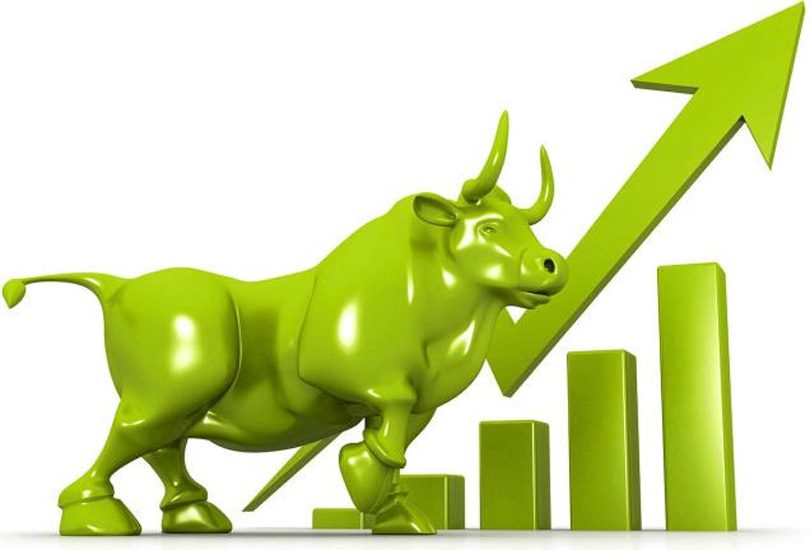
Shares and IPOs have been a rave in the Nepali market for a couple of years now. It seems that everyone is trying to enter the market and get a footing. The share market, also known as the stock market, is a dynamic financial platform where the buying and selling of securities such as stocks and bonds take place. However, not everyone is quite literate about the share market and what goes inside.
Before venturing into the share market, it is critical to familiarise oneself with the essential terms and concepts that govern this complex financial arena. Understanding the terms is crucial for making informed investment decisions.
So here are a few of the key terms that one should know and understand to thrive in the share market.
Index

An index serves as a statistical gauge that encapsulates the performance of a designated group of stocks. Its primary function is to monitor and reflect the overall performance of a specific market or a particular segment within the market, providing investors and analysts with valuable insights into market trends. Examples of widely recognised indices are the S&P 500, Dow Jones Industrial Average, and Nasdaq. NEPSE (or Nepal Stock Exchange Index) is the one for Nepal.
Stocks
A stock or share denotes ownership in a corporation, signifying that the shareholder possesses a stake in the company and holds a claim to its assets and profits. This ownership may come with voting privileges and the potential to receive dividends.
Stocks come in two main types: common and preferred, each carrying distinct rights and associated risks. Common stock is the most prevalent form of equity ownership in a company. Preferred stock, on the other hand, grants shareholders a different set of privileges and often comes with a fixed dividend rate, providing a more stable income stream.
Ticker Symbol

A stock ticker symbol is a distinct combination of letters assigned to a security for identification purposes on a stock exchange. Typically consisting of letters, these symbols play a crucial role in streamlining the stock trading process. It serves as a unique identifier for individual stocks, facilitating swift identification and trading by investors. For instance, the ticker symbol for Agricultural Development Bank Limited is ADBL and Upper Tamakoshi Hydropower Ltd is UPPER.
Bull Market

One of the most common things said about the share market is whether it is a bear or a bull. A bull market is defined by an upward trend in stock prices, accompanied by a prevailing sense of optimism and positive investor sentiment. This phase is often linked with economic expansion and heightened confidence in the financial markets. Investors tend to exhibit a greater willingness to purchase and retain stocks during this period, with the expectation that prices will experience further growth.
Bear Market

Meanwhile, a bear market is identified by a substantial decline in stock prices, accompanied by widespread pessimism and a prevailing negative sentiment among investors. Typically, it involves a drop of 20 per cent or more from recent market peaks, prompting investors to adopt a more risk-averse stance, resulting in increased selling pressure. In essence, being bearish denotes adopting a pessimistic viewpoint towards the overall market or specific stocks, anticipating a downward trend in prices.
Initial Public Offering (IPO)
And the most popular term known and used by a layman is IPO; their entryway into the share market. So what is an IPO?
An IPO marks the inaugural issuance of a company’s shares to the general public. This strategic financial move serves a dual purpose by enabling the company to secure additional capital for its expansion plans through the issuance of new shares, while concurrently presenting potential investors with the chance to acquire ownership stakes in the newly public entity. In essence, an IPO signifies the initiation of public trading for a company’s stock, facilitating a crucial avenue for both fundraising and investor participation.
Portfolio
An investment portfolio refers to the assembly of financial assets owned by either an individual or an institution. The primary objective of constructing a portfolio is to effectively manage risk through the strategic allocation of investments across various asset classes.
For one to get a better hold of their assets and the market it is advised that they diversify their portfolio. Diversification involves the inclusion of a mix of assets, such as stocks, bonds, mutual funds, and other financial instruments, within the portfolio. It aims to mitigate the impact of fluctuations in any single asset category on the overall portfolio, by spreading investments across different types of assets.

Market Capitalization (Market Cap)
Market Capitalization is a financial metric that represents the total value of a company’s outstanding shares of stock. This valuation is determined by multiplying the current share price by the total number of outstanding shares. Essentially, market cap serves as a comprehensive indicator of a company. By assessing market cap, investors can classify companies into distinct categories such as the relative size and scale of different companies within the market.
Market order
A market order is a directive to buy or sell security promptly at the prevailing market price, ensuring swift execution. However, the actual execution price may differ from the expected price. This type of order guarantees quick completion but lacks specificity regarding the price. It is often mixed and confused with limit order.
A limit order, in contrast, is an instruction to buy or sell a security at a designated price or a more favourable one. Unlike market orders, limit orders prioritise a specified price point and may not guarantee immediate execution. This type of order is commonly employed for stocks with high liquidity.
Broker
A broker, whether an individual or a registered firm authorised by regulatory authorities, plays a crucial role in facilitating the purchase and sale of financial securities on behalf of clients. This involves the execution of trades on stock exchanges, with brokers earning compensation in the form of commissions or fees for their services.
Their primary function is to streamline the process of securities transactions, ensuring efficient and compliant dealings in the financial markets. There are a fixed number of brokers, authorised for trading.
Volume
Trading volume signifies the quantity of shares exchanged within a specified timeframe. Elevated volume typically signals robust investor engagement and market liquidity, denoting active trading. Conversely, low volume may indicate reduced market activity, pointing to a more subdued trading environment.
The trading volume and the fluctuations also refer to the volatility of the market. High volatility implies substantial price fluctuations, reflecting dynamic market conditions and potential opportunities for significant gains or losses. On the other hand, low volatility suggests a more stable market environment with relatively modest price movements, which may appeal to investors seeking a calmer and less turbulent trading experience.
Price-to-Earnings (P/E Ratio)
The Price-to-Earnings Ratio (P/E Ratio) is a financial metric that compares a company’s share price to its earnings per share (EPS). This widely utilised valuation measure offers insights into the market’s assessment of a company’s profitability. In essence, the P/E ratio reflects the amount investors are willing to invest for every dollar of earnings generated by the company. It is calculated by dividing the company’s share price by its earnings per share, providing a key indicator of investor sentiment and the perceived value of the company’s earnings.





















